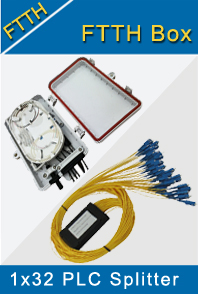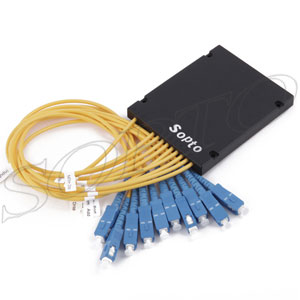-

- Sopto Home
-

- Special Topic
-

- FTTH Knowledge
-

- CWDM-PON VS DWDM-PON
FTTH Knowledge
- Solving the FTTH Rollout Problem in Multiple Dwelling Units
- WDM PON Introduction FAQ
- A Simple Overview of Optical Power Meter
- ODN is based on PON FTTH Optical Cable Network of the Device
- Using an OTDR to be an Expert in Fiber Link Testing
- How FTTH Broadband Works?
- Connections among Fiber Terminal Boxes & Patch Cables & Pigtails
- Easy to Install a Fiber Terminal Box
- What is Arrayed Waveguide Grating?
SOPTO Special Topic
Certificate



Guarantee
Except products belongs to Bargain Shop section, all products are warranted by SOPTO only to purchasers for resale or for use in business or original equipment manufacturer, against defects in workmanship or materials under normal use (consumables, normal tear and wear excluded) for one year after date of purchase from SOPTO, unless otherwise stated...
Return Policies
Defective products will be accepted for exchange, at our discretion, within 14 days from receipt. Buyer might be requested to return the defective products to SOPTO for verification or authorized service location, as SOPTO designated, shipping costs prepaid. .....
Applications

Sopto supply the best FTTH solutions for your network!
SOPTO Products
- Fiber Optic Transceiver Module
- High Speed Cable
- Fiber Optical Cable
- Fiber Optical Patch Cords
- Splitter CWDM DWDM
- PON Solution
- FTTH Box ODF Closure
- PCI-E Network Card
- Network Cables
- Fiber Optical Adapter
- Fiber Optical Attenuator
- Fiber Media Converter
- PDH Multiplexers
- Protocol Converter
- Digital Video Multiplexer
- Fiber Optical Tools
- Compatible
Related Products
Performance Feature
FTTH Knowledge
Recommended

CWDM-PON VS DWDM-PON
Depending on the wavelength assignment, the WDM-PON can be separated into two groups: the CWDM-PON (Coarse Wavelength Division Multiplexing PON) and the DWDM-PON (Dense Wavelength Division Multiplexing PON).
Figure 1 shows eighteen wavelength channels with 20-nm wavelength spacing. This property is common for the CWDM-PON. The 18 wavelengths use spectrum of 1271-1611 nm and do not require strict tuning. Meanwhile thermal regulation is unnecessary with the use of low-cost AWGs (Arrayed Waveguide Gratings).
Depending on the wavelength plan or the rate per ONU the choice of the type of laser can change. However, Fabry-Perot lasers are usually used for upstream transmission, while more expensive DFB (Distributed FeedBack) lasers - for downstream.
.png)
Figure 1. CWDM wavelength assignments
DWDM-PON is using wavelength spacing of up to 3.2 nm due to a finger granularity. Available DWDM spectrum is between 1528.77 and 1563.86 nm. DWDM-PON exceeds with longer signal distance (70-135 km) than CWDM-PON.
Always growing demand for high-speed bandwidth stimulates research organizations to develop cheaper and more efficient equipment. Development of the FTTH standard motivated Europe to create SARDANA (Scalable Advanced Ring-based passive Dense Access Network Architecture) project. SARDANA is using 32-wavelength WDM/TDM passive fiber ring PON, as shown in Figure 2. It supports multiple OLT communications and multiple user locations.
This hybrid Architecture combines WDM ring with TDM access tree. As Figure 3 shows it is achieved with the help of the remote nodes that can be added at any time, making architecture scalable. SARDANA is using two fibers in the ring, one for each direction of traffic. Tree topology starts from the remote node - each tree gets its own wavelength. This makes remote node use two downstream and two upstream wavelengths at the same time.

Figure 2. High-level SARDANA system architecture
Even if the whole ring is passive, signal still requires amplification at the remote nodes. It is achieved with the help of EDFA (Erbium Doped Fiber Amplifier) located in the central office. EDFA helps to overcome attenuations from transmission, and filter the signal. The maximum number of remote nodes is depending on the amplifier power.
Other end of the network is similarly passive. RSOA (Reflective Semiconductor Optical Amplifier) is used in ONU to generate the upstream carrier by reusing a downstream signal. Upstream signal is having the same wavelength as the downstream one. Interference is avoided with the help of directional couplers.
The general idea behind SARDANA is the ability to realize huge access capacities. In order to popularize the architecture, industry requires inexpensive, mass produced optical equipment.

Figure 3. SARDANA hybrid passive ring-tree architecture
For more info, please browse our website.




